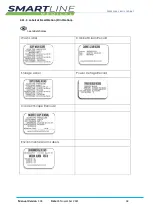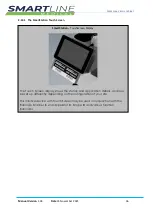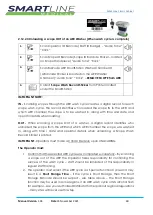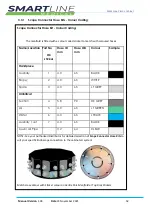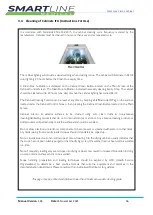
RotaScope Classic Cabinet
Manual Version
1.04
Date
23 November 2021
48
3.1.4
Safety information related to the intended use and reasonably foreseeable
misuse.
3.1.4.1
Condition of the Endoscope
Verification is required that all channels allow the passage of air before the
device is loaded into the storage cabinet when a scope has been cleaned
and disinfected using a manual cleaning procedure. The internal channels of
the endoscope are to undergo an aeration test (bubble test) as per
manufactures instructions.
In the case where the endoscope is cleaned and disinfected using a
validated processing procedure (washers compliant with EN ISO 15883-
4:2009), this verification is included through the washer
’s
channel monitoring;
however, extensive air flushing (Purging) of all channels is recommended
before placing the endoscope in the cabinet to purge any bulk water left
inside endoscope channels from the washers.
NOTE: If you do not air purge the internal channels of the endoscopes after
the washing/disinfection procedure, retained moisture could impact on the
storage cabinet efficiency. Users are reminded that it is important to conform
to manufacturer’s recommendations and instructions.
Scopes should have channels blown dry with medical air from handpiece
ports including biopsy channel and thumb ports for suction and air/water.
Verification is required that all channels allow the passage of air before the
device is loaded into the storage cabinet.
Endoscopes should be transferred into storage/ drying cabinet as soon as
possible after endoscope has completed all of it set cleaning phases. Take
care to not touch any part of the endoscope on surfaces that may cause a
cross contamination onto the endoscope.
NOTE: The electronic data system of the Cabinet counts the time taken from
the removal of the scope from the washer to the time loaded into the
cabinet. The data system deducts this
“
loading time
”
from the three-hour
factory set 3 hour “Out Of Cabinet
Time
”
(OOC) and displays the remaining
time on the Control Screen for each loaded scope.
3.1.4.2
In case of power failure
Restore power as quickly as possible to the endoscope storage cabinet or
transfer endoscopes to a fully operational cabinet.
NOTE: The electronic data system of the Cabinet will count every minute that
the endoscope is stored without power as a minute of
“
Out of Cabinet Time
”
(OOC). Each endoscope has only 180 minutes of Out of Cabinet time per
cleaning cycle. If endoscopes are stored without power for a period that
excess the Out of Cabinet time, endoscopes will have to go through the
cleaning cycle again in full to be reprocessed prior to use.

